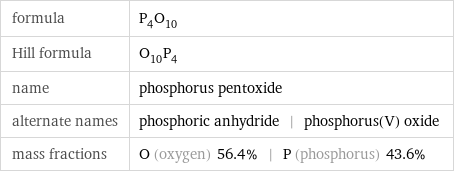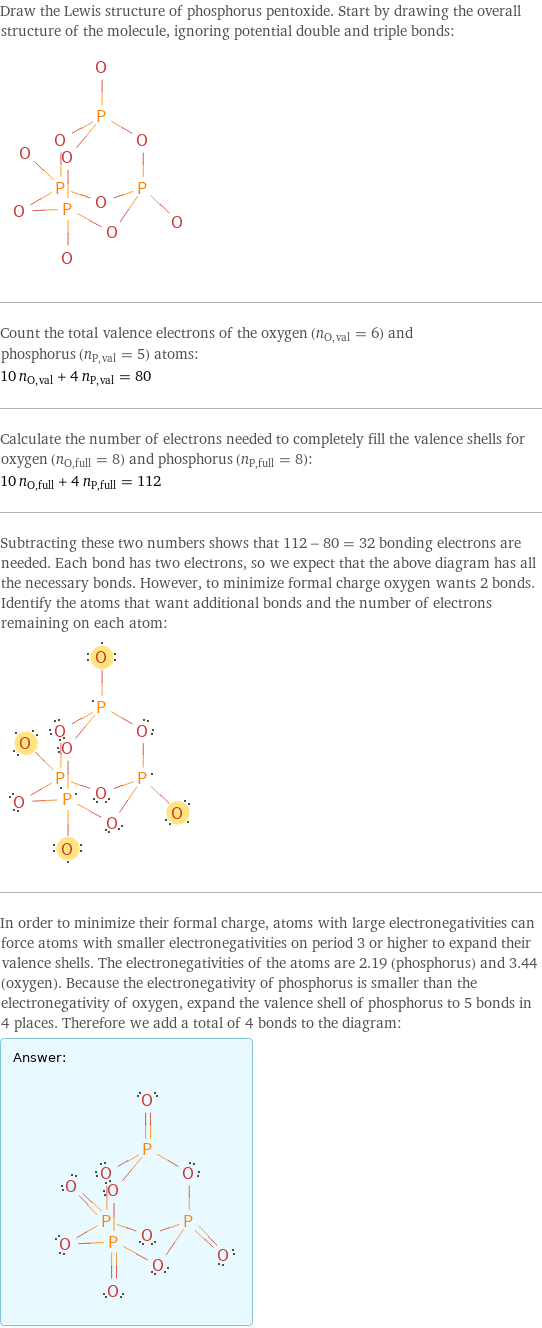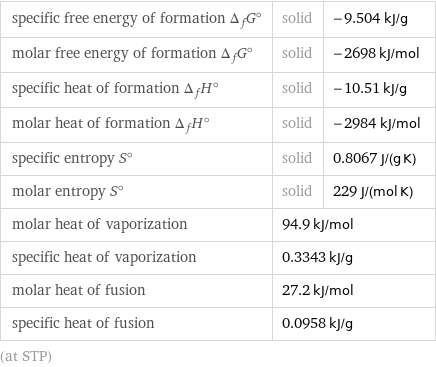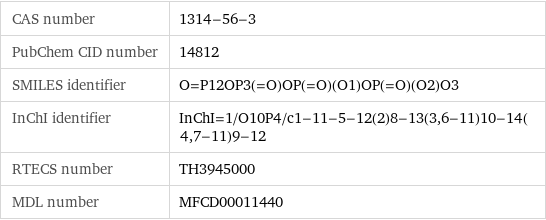Input interpretation

phosphorus pentoxide
Chemical names and formulas

formula | P_4O_10 Hill formula | O_10P_4 name | phosphorus pentoxide alternate names | phosphoric anhydride | phosphorus(V) oxide mass fractions | O (oxygen) 56.4% | P (phosphorus) 43.6%
Lewis structure

Draw the Lewis structure of phosphorus pentoxide. Start by drawing the overall structure of the molecule, ignoring potential double and triple bonds: Count the total valence electrons of the oxygen (n_O, val = 6) and phosphorus (n_P, val = 5) atoms: 10 n_O, val + 4 n_P, val = 80 Calculate the number of electrons needed to completely fill the valence shells for oxygen (n_O, full = 8) and phosphorus (n_P, full = 8): 10 n_O, full + 4 n_P, full = 112 Subtracting these two numbers shows that 112 - 80 = 32 bonding electrons are needed. Each bond has two electrons, so we expect that the above diagram has all the necessary bonds. However, to minimize formal charge oxygen wants 2 bonds. Identify the atoms that want additional bonds and the number of electrons remaining on each atom: In order to minimize their formal charge, atoms with large electronegativities can force atoms with smaller electronegativities on period 3 or higher to expand their valence shells. The electronegativities of the atoms are 2.19 (phosphorus) and 3.44 (oxygen). Because the electronegativity of phosphorus is smaller than the electronegativity of oxygen, expand the valence shell of phosphorus to 5 bonds in 4 places. Therefore we add a total of 4 bonds to the diagram: Answer: | |
3D structure

3D structure
Basic properties

molar mass | 283.89 g/mol phase | solid (at STP) melting point | 340 °C density | 2.3 g/cm^3
Units

Solid properties (at STP)

density | 2.3 g/cm^3 vapor pressure | 0.9998 mmHg
Units

Thermodynamic properties

specific free energy of formation Δ_fG° | solid | -9.504 kJ/g molar free energy of formation Δ_fG° | solid | -2698 kJ/mol specific heat of formation Δ_fH° | solid | -10.51 kJ/g molar heat of formation Δ_fH° | solid | -2984 kJ/mol specific entropy S° | solid | 0.8067 J/(g K) molar entropy S° | solid | 229 J/(mol K) molar heat of vaporization | 94.9 kJ/mol | specific heat of vaporization | 0.3343 kJ/g | molar heat of fusion | 27.2 kJ/mol | specific heat of fusion | 0.0958 kJ/g | (at STP)
Chemical identifiers

CAS number | 1314-56-3 PubChem CID number | 14812 SMILES identifier | O=P12OP3(=O)OP(=O)(O1)OP(=O)(O2)O3 InChI identifier | InChI=1/O10P4/c1-11-5-12(2)8-13(3, 6-11)10-14(4, 7-11)9-12 RTECS number | TH3945000 MDL number | MFCD00011440